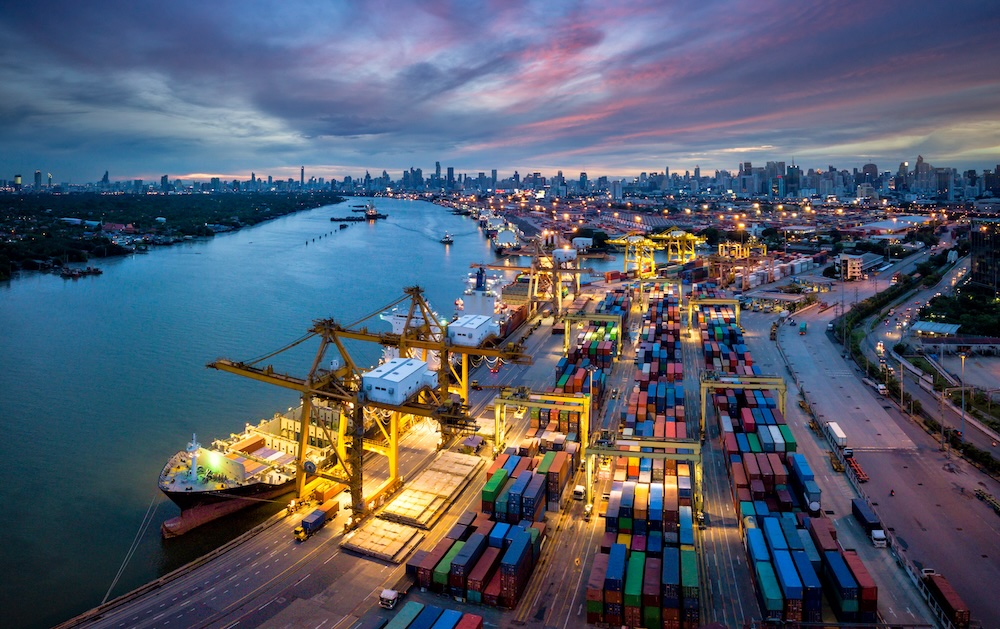 Ian Rogerson Co-founder, Bankside Systems Ltd
Ian Rogerson Co-founder, Bankside Systems Ltd

The term ‘green credentials’ is very nuanced, and a quick Google search will throw up reams of information bandying around buzzwords and abbreviations that will leave you snow-blind as you attempt to take it all in.
With the shipping industry responsible for around three per cent of global greenhouse gas emissions (GHG), any business that plays a part in transporting 90 per cent of trade internationally via ocean shipping should be asking themselves how they can lower their carbon output; not simply driven by regulations or targets set by industry bodies or governments, but because it’s the right thing to do.
No matter where you are in your journey to lowering your carbon output – years-in or just starting out – get some clarity around what impact you can make with the operations that you’re currently dealing with. Familiarise yourself with the ‘Green Port Initiative’ and how embracing its solutions could enhance your progress towards your net zero targets. Some solutions will tick boxes and provide ‘quick wins’ and we’d encourage you to take those if they move you in the right direction towards your goals, but don’t overlook the impact your IT systems and Terminal Operating System (TOS) can have on your carbon emissions.
Let’s be clear, our expertise lies in TOS and container management, not GHG emissions and climate change, but for a number of years we have honed our web-based TOS to support businesses on their journey to net zero. We firmly believe that following the guidance below can put you on the right track to achieving those much longed-for green credentials.
Eliminate the infrastructure
Older systems may need significant amounts of IT infrastructure to operate, requiring servers at each location with their attendant power, maintenance, and support costs. Web technologies centralise data off site and therefore reduce the amount of local hardware required to support systems, thus lowering energy requirements. This centralisation brings other benefits too – multiple locations can share common data whilst keeping their own information to themselves, and management information (MI) can easily provide analysis across the whole piece.
Due diligence along the supply chain
Be cautious of offerings to simply “put your system in the cloud” – it may be that, at worst, the cloud-hosting infrastructure has a higher environmental cost than your existing solution or, at best, is difficult to measure. Check the cloud solution’s own data centre credentials to be sure that this is one item that won’t affect your environmental bottom line.
One system to rule them all
Many organisations have a whole range of disparate systems performing separate functions across the business. When the systems need to talk to each other, yet more layers of tech hardware and software are needed to join them together. Each of these systems and interfaces carries an environmental and maintenance cost. Consider integrating as much as you can into a single package. This can significantly reduce the environmental (and other) costs.
(Low) power to the people
Desktop PCs take a lot more power to run than mobile devices. Older software systems tend to rely on Windows PC to do their work, whereas web-based systems will run on any device with a modern web browser, such as a phone or an Android tablet. This offers another way to reduce power usage. Of course, it also brings much more mobility and flexibility to your teams whilst still giving the option to use desktop PCs for more complex tasks.
Let your neighbours breathe easy
Queues of vehicles in and around your terminal don’t just contribute to global warming but also to pollution levels in the locality. Introducing a Vehicle Booking System (VBS) can help to regulate traffic levels and eliminate queues - reducing pollution, fuel usage and frustration for hauliers and staff. Using a TOS with an integrated VBS enables you to seamlessly manage vehicle bookings alongside your other yard and container management operations.
Dig into data from disparate devices
Tracking devices are now widespread across the sector – available not just for containers but also fitted inside your vehicles and other key assets - reporting on location, fuel usage, tyre wear and so on. This data really comes to life when integrated into your TOS where you can report on journey efficiency and queuing issues, as well as making sure everything’s where it should be.
Be smart
Artificial Intelligence is somewhat flavour-of-the-month at the moment but for good reason. The application of machine learning to your data can bring environmental (and cost) efficiencies across the operation, with insights into asset location and movement, vehicle and vessel management, staff efficiencies and so on. But before you spend a fortune on AI development make sure you’re making the most of what you already have. It can be easy to overlook the value of the data you already collect – especially when this is siloed. Careful integration and reporting across your full dataset can reap valuable environmental, operational and financial rewards.
Evolve and adapt
The sector is changing very rapidly. Your TOS needs to be able to adapt and change with it, whilst also accommodating your own bespoke needs. Make sure you have a trusted relationship with a software supplier who understands your business and can partner with you as you work towards net zero.
For more information, please visit: www.intermodalmanager.com
About the author
Ian Rogerson is co-founder of Bankside Systems Ltd, the creators of Intermodal Manager, a web-based Terminal Operating System. Intermodal Manager is built on 25 years of experience of the latest technologies, allowing rapid development and innovation. As a UK-based software company it aims to build lasting partnerships with clients rather than go for the quick sale.